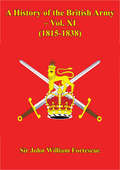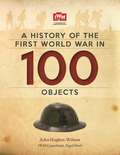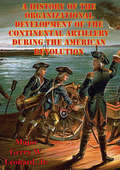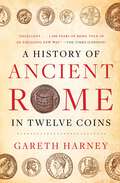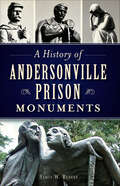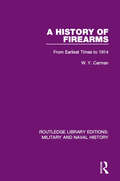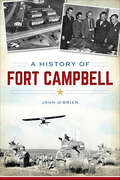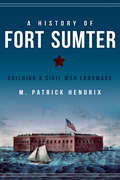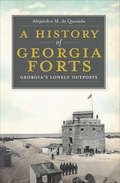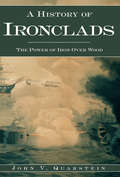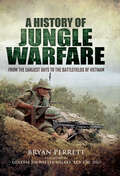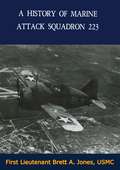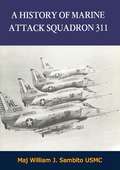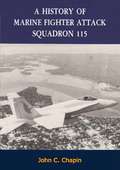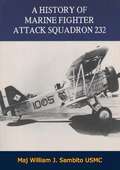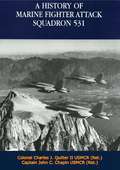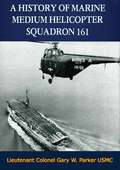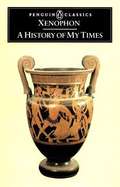- Table View
- List View
A History Of The British Army: 1815-1838 (A History of the British Army #12)
by Hon. Sir John William FortescueSir John Fortescue holds a pre-eminent place amongst British military historians, his enduring fame and legacy resting mainly on his life’s work “The History of the British Army”, issued in 20 volumes, which took him some 30 years to complete. In scope and breadth it is such that no modern scholar has attempted to cover such a large and diverse subject in its entirety; but Sir John did so and with aplomb, leading to a readable and comprehensive study.According to Professor Emeritus of Military History at King’s College, Brian Bond, the work was “the product of indefatigable research in original documents, a determination to present a clear, accurate, and readable narrative of military operations, and a close personal knowledge of the battlefields, which enabled him to elucidate his account with excellent maps. Most important, however, was his motivation: namely, a lifelong affection for the old, long-service, pre-Cardwell army, the spirit of the regiments of which it largely consisted, and the value of its traditions to the nation. An important part of his task was to distil and inculcate these soldierly virtues which, in his conservative view, contrasted sharply with the unedifying character of politicians who habitually meddled in military matters.” ODNB.This eleventh volume covers the period from 1815-1838, as the tumult of the Napoleonic Wars finally came to a close, two major themes emerged within and without the British Army, that of reform and Imperial expansion.Written as always with superb detail and authority, Sir John details the expansion the new age of the British Empire and its extension into Nepal and their alliance with the Ghurka people, an alliance that survives to this day, and also into parts of India previously untouched and Africa via the Pindari and Ashanti campaigns.A MUST READ for any military enthusiast.
A History Of The First World War In 100 Objects: In Association With The Imperial War Museum
by John Hughes-Williams Nigel SteelA History of the First World War in 100 Objects narrates the causes, progress and outcome of the First World War by telling the stories behind 100 items of material evidence of that cataclysmic and shattering conflict.From weapons that created carnage to affectionate letters home and from unexpected items of trench decoration to the paintings of official war artists, the objects are as extraordinary in their diversity and story-telling power as they are devastating in their poignancy.Each object is depicted on a full page and is the subject of a short chapter that 'fans out' from the item itself to describe the context, the people and the events associated with it. Distinctive and original, A History of the First World War in 100 Objects is a unique commemoration of 'the war to end all wars'.
A History Of The First World War In 100 Objects: In Association With The Imperial War Museum
by John Hughes-WilsonA History of the First World War in 100 Objects narrates the causes, progress and outcome of the First World War by telling the stories behind 100 items of material evidence of that cataclysmic and shattering conflict.From weapons that created carnage to affectionate letters home and from unexpected items of trench decoration to the paintings of official war artists, the objects are as extraordinary in their diversity and story-telling power as they are devastating in their poignancy.Each object is depicted on a full page and is the subject of a short chapter that 'fans out' from the item itself to describe the context, the people and the events associated with it. Distinctive and original, A History of the First World War in 100 Objects is a unique commemoration of 'the war to end all wars'.
A History Of The Organizational Development Of The Continental Artillery During The American Revolution
by Major William C. Pruett US ArmyThe thesis of this study is that the Continental artillery in the American Revolution, despite its ad hoc beginning and wartime challenges, gradually developed into a professional organization by the end of the war. Rather than operational history of the organization, its focus is on the growth of the organization over time, in terms of its cultural beginnings, its doctrinal development, and the leadership and career paths of some of its middle ranking leaders. The first chapter lays out the structural framework and statutory authorizations for the organization. The second chapter describes its early cultural shift from its pre-war legacy of provincialism to a trajectory toward professionalism. This chapter uses a cultural analysis to argue that Washington's decision to replace the aged Richard Gridley with Henry Knox as the commander of the Continental artillery ushered in a cultural shift away from an older provincial organizational culture to one that sought professionalism. The third chapter portrays the development of a battlefield tactical doctrine described in books that gradually took hold in informal ways. It takes a comparative theory and practice approach to argue that the kernel of an emerging doctrine existed in available European books and from those kernels, a consistent and effective doctrine developed over time. The fourth chapter uses a collective biographical approach to show organizational development in the careers of its middle ranking leaders. The concluding chapter summarizes findings and ties the professionalization of the corps of artillery to the military establishments of the new republic.
A History Of The Pequot War: Or A Relation Of The War Between The Powerful Nation Of Pequot Indians
by Lion GardinerA History of the Pequot War: Or A Relation of the War Between the Powerful Nation of Pequot Indians by Lion Gardiner is a firsthand account of one of the most pivotal conflicts in early colonial America. Written by Gardiner, an experienced military engineer and leader who actively participated in the war, the book provides a rare and invaluable perspective on the events surrounding the Pequot War (1636-1638), a brutal conflict between the Pequot tribe and English colonists in New England.Gardiner’s narrative offers detailed descriptions of key battles, including the decisive attack on the Pequot stronghold at Mystic Fort, where English forces, aided by Native American allies, launched a devastating assault. His account captures the strategic challenges faced by both sides, the cultural misunderstandings that fueled the conflict, and the complexities of colonial-Native alliances during the war.The book goes beyond military events, providing insights into the personalities involved—such as colonial leaders and Pequot chiefs—and the impact of the war on the region's political dynamics. Gardiner also reflects on the tensions between settlers and Indigenous communities, making this work not just a war chronicle but an important commentary on early colonial-Native relations.A History of the Pequot War stands out as both a historical document and a personal reflection on the harsh realities of warfare in 17th-century America. For scholars, historians, and readers interested in early American history, Native American studies, or military strategy, Gardiner’s work offers an essential and authentic glimpse into one of the first major conflicts between Native Americans and European settlers in New England.
A History Of U.s. Military Forces In Germany
by Daniel J. NelsonDiscussing why the U.S. will remain in the FRG for the foreseeable future, this book examines the U.S. military presence in Germany. It shows how that presence has affected the development of the political and diplomatic relationship between the two countries.
A History of Adoption in England and Wales 1850- 1961
by Gill RossiniAdoption is one of the most emotive and complex subjects in social and family history. Gill Rossini's social history of adoption between 1850 and 1961 uncovers the perspectives of all those concerned in adoption: children, birth relatives, adoptive families, and all the agencies and organisations involved. Rossini charts the transformation of the adoption process from a chaotic informal arrangement to a legal procedure. Set against the backdrop of the moral, cultural, and legal climate of the times, the contemporary voices of those who played a part in an adoption give real insights into this often turbulent period in their lives. Discover how shocking stories of baby farmers and unwanted orphans fuelled the campaign for change, and hear previously untold stories.For those who wish to conduct their own research into an adoption, Rossini has compiled a comprehensive guide to resources.
A History of Ancient Rome in Twelve Coins
by Gareth HarneyHold the glory—and infamy—of ancient Rome in the palm of your hand in this extraordinary and accessible story of history&’s greatest superpower, as told through humanity&’s most universal object: the coin.When Gareth Harney was first handed a Roman coin by his father as a child, he became entranced by its beauty, and its unique ability to connect us with the distant past. He soon learned that the Romans saw coins as far more than just currency—these were metal canvases on which they immortalized their sacred gods, mighty emperors, towering monuments, and brutal battles of conquest. Revealed in those intricate designs struck in gold, silver, and bronze was the epic story of the Roman Empire. Now, with his &“novel and highly readable&” (Philip Matyszak, author of The Blood-Red Sunset) voice and engaging research, Harney traces ancient Rome&’s rise, from a few huts on an Italian hilltop to an all-conquering empire spanning three continents, through the fascinating lives of twelve remarkable coins. A unique and enthralling work of history for experts and casual history buffs.
A History of Andersonville Prison Monuments (Civil War Series)
by Stacy W. ReavesIn April 1865, the nation learned of the atrocities and horrors of the Southern prison camp at Andersonville, Georgia. An army expedition and Clara Barton identified the graves of the thirteen thousand who perished there and established the Andersonville National Cemetery. In the 1890s, veterans and the Woman's Relief Corps, wanting to ensure the nation never forgot the tragedy, began preserving the site. The former prisoners expressed in granite their sorrow and gratitude to those who died or survived the prison camp. Join author and historian Stacy W. Reaves as she recounts the horrendous conditions of the prison and the tremendous efforts to memorialize the men within.
A History of Firearms: From Earliest Times to 1914 (Routledge Library Editions: Military and Naval History #7)
by W. Y. CarmanAmply illustrated with pen & ink drawings, and including a glossary of key terms, this volume, originally published in 1955, traces the history of firearms and the pioneers who made that history, step by step, to the fringe of a complex modern science.
A History of Fort Campbell (Military)
by John O'BrienThe mission at Fort Campbell has changed over the past seventy-five years, and the city has grown and adapted to meet new challenges. It was conceived before Pearl Harbor as the Tennessee-Kentucky Armor Camp and has progressed in recent years to meet changing national security needs and the transformation of the U.S. Army. The fort is home to the army's most elite air assault and airborne units. It is also the largest employer in Tennessee and Kentucky and puts $2.6 billion into the local economy each year. Author and post historian John O'Brien details the historic ride that took Fort Campbell from a "Giant Bachelor City" to a "World-Class Army Home."
A History of Fort Sumter: Building a Civil War Landmark (Landmarks Ser.)
by M. Patrick HendrixA thrilling account—from construction to ruin—of the South Carolina fort where the Civil War&’s opening shots were fired, forging its place in history. In 1829, construction began on a fort atop a rock formation in the mouth of Charleston Harbor. Decades later, Fort Sumter was near completion on December 26, 1860, when Maj. Robert Anderson occupied it in response to the growing hostilities between the North and South. As a symbol of sedition for the North and holy ground for the South, possession of Fort Sumter was deemed essential to both sides when the Civil War began. By 1864, the fort, heavily bombarded by Union artillery, was a shapeless mass of ruins, mostly burned rubble and sand with a garrison of Confederate soldiers holding its ground. Join author M. Patrick Hendrix as he follows the tumultuous lives of the men who fought to control what later became one of the most revered monuments to the war. Includes photos
A History of France
by John Julius NorwichAn &“engaging, enthusiastic, sympathetic, funny&” journey through French history from the New York Times-bestselling author of Absolute Monarchs (The Wall Street Journal). Beginning with Julius Caesar&’s conquest of Gaul in the first century BC, this study of French history comprises a cast of legendary characters―Charlemagne, Louis XIV, Napoleon, Joan of Arc, and Marie Antoinette, to name a few―as John Julius Norwich chronicles France&’s often violent, always fascinating history. From the French Revolution―after which neither France nor the world would be the same again―to the storming of the Bastille, from the Vichy regime and the Resistance to the end of the Second World War, A History of France is packed with heroes and villains, battles and rebellion—written with both an expert command of detail and a lively appreciation for the subject matter by this &“true master of narrative history&” (Simon Sebag Montefiore).
A History of Georgia Forts: Georgia's Lonely Outposts (Landmarks Ser.)
by Alejandro M. de QuesadaA look at military fortifications over the centuries, with photos included. The state of Georgia has a long tradition of building stalwart military fortifications—going all the way back to the early sixteenth century, when it was part of a much larger region of the Southeast claimed by Spain and known as La Florida. After the failure of Lucas Vasquez de Ayllon&’s settlement in 1526 on the coast of Georgia, French Huguenots established a small fort at Port Royal Sound and another along the St. Johns River. This book explores the centuries that followed, revealing the history behind Georgia&’s many forts. Discover who emerged victorious after Savannah&’s Fort Pulaski was bombarded for over thirty hours by Federal troops during the Civil War, and why Fort Oglethorpe was constructed in 1902 within the confines of Chickamauga Park, as military historian and archivist Alejandro de Quesada explores the breadth of Georgia&’s forts from the colonial and antebellum eras to the Civil War and modern times.
A History of Ironclads: The Power of Iron Over Wood (Civil War Series)
by John V. QuarsteinOne of history's greatest naval engagements, the Battle of Hampton Roads, occurred on March 8 and 9, 1862. On the first morning, the Confederate ironclad the CSS Virginia, formerly known as the Merrimack, sank two Union wooden warships, proving the power of the armored vessels over the traditional sailing ships. The next morning, the Virginia engaged the Union ironclad USS Monitor to a draw in a battle that significantly altered naval warfare. It was the first engagement between ironclads and ushered in a new era of warship construction and ordnance. The 25, 000 sailors, soldiers and civilians who witnessed the battle knew then what history would soon confirm: wars waged on the waters would never be the same. The seemingly invincible Monitor and Virginia were experimental ships, revolutionary combinations of new and old technology, and their clash on March 9, 1862, was the culmination of over 2, 000 years of naval experience. The construction and combat service of ironclads during the Civil War were the first in a cascade of events that influenced the outcome of the war and prompted the development of improved ironclads as well as the creation of new weapons systems, such as torpedoes and submarines, needed to counter modern armored warships.
A History of Jungle Warfare: From the Earliest Days to the Battlefields of Vietnam
by Bryan PerrettA world where little light penetrates. Of dense vegetation, tangled roots, fetid mud and swamps. Where the helicopter, sophisticated weaponry and technology have revolutionized military combat. But where survival still depends on acute observation and listening for the slightest sound. The jungle. Backdrop to one of the most gruelling of all forms of warfare. To wars that in recent times have changed the course of history. The subject of this expert, extensively illustrated study by Bryan Perrett. Originally published to acclaim in 1990 by Patrick Stephens Limited, this re-issue represents a determination on the publisher's part to keep this esteemed volume in print.
A History of Marine Attack Squadron 223
by First Lieutenant Brett A. Jones USMCThis history was compiled for the purpose of providing a concise and accurate record of a distinguished squadron's accomplishments. It is the author's belief that a thorough knowledge of the past contributes immeasurably to the development of strong unit integrity. Just as "Espirit de Corps" is instilled in a Marine by a thorough knowledge of Marine Corps history, unit pride can be instilled by the awareness of unit's accomplishments. The history of Marine Attack Squadron 223 has been one of constant endeavor. The original ''Bulldogs'' at Guadalcanal initiated a tradition that has continued for over 30 years. It is sincerely hoped that this work will assist in the continuation of that tradition.
A History of Marine Attack Squadron 311 (Marine Corps Squadron Histories Series)
by Maj William J. Sambito USMCIn this publication the history of Marine Attack 311 is traced from its commissioning in December 1942 through three wars and several evolutions during which the unit made the transition from a fighting squadron flying propeller-driven planes to a modern attack squadron equipped with high-performance jet aircraft. The history was prepared principally from primary sources such as command diaries and chronologies, published historical works, and recollections of Marines involved.Marine Attack Squadron 311 is one of many commands which were established during this rapid expansion in World War II. This squadron, originally commissioned as Marine Fighting Squadron 311, was born of war and baptized in the islands of the Pacific. It later met the challenge of Korea and carried forth its legend to Vietnam.
A History of Marine Fighter Attack Squadron 115
by John C. ChapinThis publication traces more than 40 years of active service by Marine Fighter Attack Squadron 115. Since its commissioning in July 1943 the squadron has evolved from a group of wartime beginners in SNJ-4 planes to front line professionals in their F/A-18 Hornets. The history provides an informative overview of the development and employment of this squadron over a span of nearly five decades. Data for the history was drawn principally from primary sources: command diaries and chronologies; muster rolls; published historical works; and recollections of the Marines involved.
A History of Marine Fighter Attack Squadron 232 (Marine Corps Squadron Histories Series)
by Maj William J. Sambito USMCMarine Fighter Attack Squadron 312, the Checkerboard squadron, enjoys a fine reputation among Marine aviators. This volume, one of a new series of brief histories on famous aviation squadrons, is offered as a tribute to the pilots and crewmen who have contributed so significantly to Marine aviation. The history of Marine Fighter Attack Squadron 312 is a narrative account of the famed Checkerboard squadron in action. VMFA-312 saw its first action in the skies over Okinawa during World War II, and later the squadron was used extensively throughout the Korean conflict. The Checkerboards were one of the first Marine squadrons in Vietnam and today maintain their combat proficiency by constant training and hard work. VMFA-312 is a proud squadron with a rich and deep heritage and has passed along its traditions to the pilots and crewmen who presently fly Marine aircraft with the Checkerboard markings.
A History of Marine Fighter Attack Squadron 321
by Peter B. MerskyDuring World War II, Marine Fighting Squadron (VMF) 321 enjoyed a brief, but successful, career as one of the many such units which contributed to the Allied victory in the Pacific. However, where many of its sister squadrons eventually disappeared during the postwar demobilization, VMF-321 was reborn at Naval Station Anacostia on the outskirts of the nation's capital as the first Marine Air Reserve fighter squadron, a role in which it continues to the present day. The Reservist's role—whatever his service, but especially that of the air Reservist—is sometimes hard for the regulars and civilian population to understand, much less appreciate. While on the face of it, the Reservist appears to have the best of both worlds, he treads a thin line between his normal civilian job and family life, and his dedicated participation in his country's defense. Even though the air Reservist obviously enjoys continuing his association with military aviation, and is well paid for his time and accumulated skills, he knows he may be called upon during national crises. Such was the case during World War II and Korea. Many Reservists paid the ultimate price for their dedication; others stood by ready to fill in when called.
A History of Marine Fighter Attack Squadron 531
by Colonel Charles J. Quilter Ii UsmcrThis history traces a half century of active service by Marine Fighter Attack Squadron 531. It was a unique squadron because its history demonstrates the complete evolution from night fighter to all-weather fighter to fighter-attack. Its earliest days placed the Marine Corps as the pioneer of all the military Services in night fighting. From the primitive converted civilian airliner, the PV-1, to the most modern Marine Corps fighter, the F/A-18, the "Grey Ghosts" evolved as their tactics changed. Their service covered the globe: Cherry Point on the East Coast, Texas, El Toro on the West Coast, the Southwest Pacific, Iwakuni in Japan, Cubi Point in the Philippines, Korea, Vietnam, the Indian Ocean, and the Caribbean. This is an operational narrative of one of the Marine Corps' most unusual aviation squadrons moving, as noted in the Foreword, through three successive and different fighter roles during 50 years of continuous service. It was a pioneer in several ways, and the superior quality of its performance was marked by numerous awards.
A History of Marine Medium Helicopter Squadron 161
by Lieutenant Colonel Gary W. Parker USMCThis history of HMM-161, one of the oldest helicopter squadrons in the Marine Corps, is part of the Marine Corps History and Museums Division's effort to bring to light the achievements and contributions made by individual squadrons to Marine aviation. Marine Medium Helicopter Squadron 161 has distinguished itself throughout its history. The squadron is noted for its work in developing the helicopter as a tactical tool for the Marine Corps and its ability to accomplish its mission regardless of the circumstances. Marine Medium Helicopter Squadron 161 enjoys a rich heritage, steeped in tradition, which was created through years of hard work and dedicated service. As a neophyte in Korea, HMR-161 tested the Marine Corps' newly developed concept of vertical assault during many landing exercises while continuing to support the 1st Marine Division. Flying in the rugged mountains of Korea, HMR-161 proved that helicopters could survive in combat and effectively carry out their mission of supporting the ground troops.
A History of Modern Urban Operations
by Gregory Fremont-BarnesThis book investigates the complexities of modern urban operations—a particularly difficult and costly method of fighting, and one that is on the rise. Contributors examine the lessons that emerge from a range of historical case studies, from nineteenth-century precedents to the Battle of Shanghai; Stalingrad, German town clearance, Mandalay, and Berlin during World War II; and from the Battle of Algiers to the Battle for Fallujah in 2004. Each case study illuminates the features that differentiate urban operations from fighting in open areas, and the factors that contribute to success and failure. The volume concludes with reflections on the key challenges of urban warfare in the twenty-first century and beyond.
A History of My Times
by Xenophon Rex WarnerDetails nearly fifty turbulent years of warfare in Greece between 411 and 362 BC. Presenting the story of the Peloponnesian War at the point where Thucydides finished his magisterial history, this title chronicles the conflicts that ultimately led to the decline of Greece, and the wars with both Thebes and the might of Persia.
